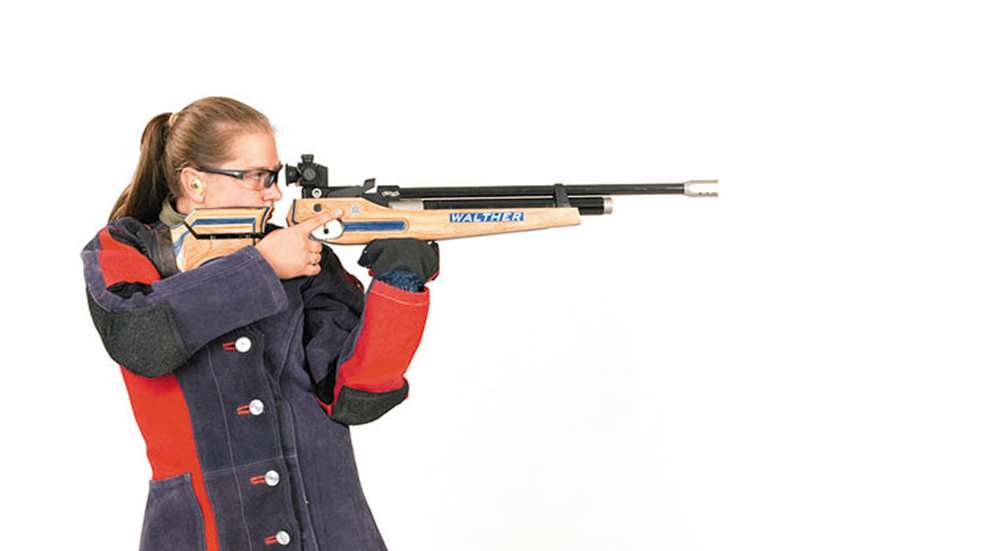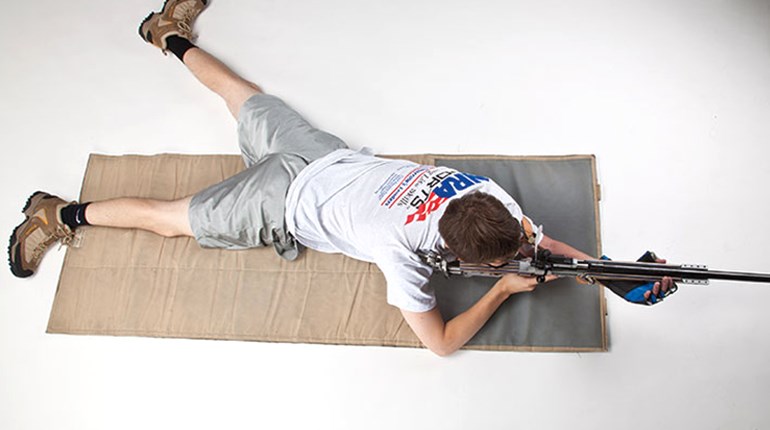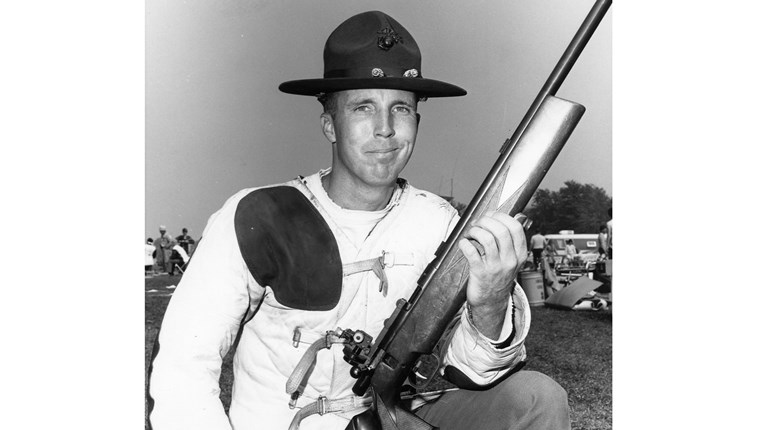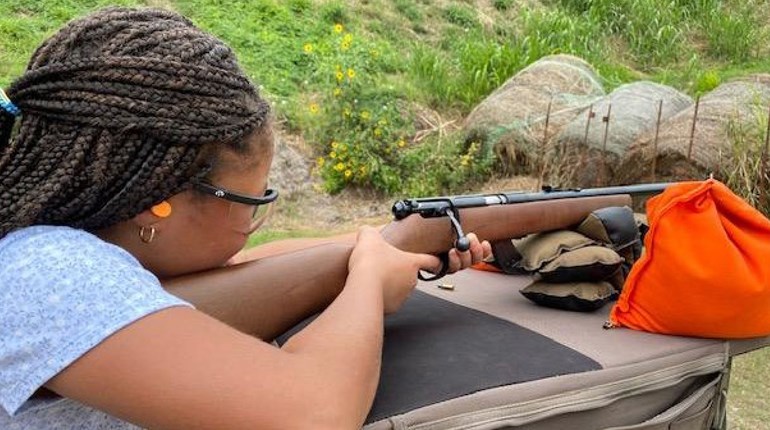
In trying to define support, we must consider two basic categories-internal and external. The first category, internal support, is derived from the shooter's body and the firearm. Any other means or device that a shooter uses to steady the firearm is external support. Right from the start you know that, like anything else, there are limits to support. Rules of the sport you are shooting, or how much weight you are willing to carry in the field all day, will help you focus on points you need to learn for individual shooting events.
Internal support
Internal support comes only from the gun-body combination. Shotgun shooters only need their body and the firearm, plus a shooting vest to keep the shotgun from slipping on the shoulder and to give some protection from recoil. For proper support, the body (particularly the bones of the legs and arms) must be properly aligned with the target area. If tension in the muscles is correct, the swing and follow-through will be like a well-oiled machine. But if the support from the skeleton and muscles is incorrect, the swing will be slow and rough, resulting in a missed target. For the shotgun shooter, support starts with the stance: feet about shoulder width apart, body balanced over the feet, torso leaned slightly forward. The butt of the shotgun is pulled into the shoulder. The elbows are held away from the body to help create a smooth swing to the target. The shooter's cheek is placed firmly against the stock with the head erect.
Support requirements vary from shotgun discipline to discipline. For example, the differing flight of the targets between skeet and trap requires the shooter adopt a different stance to support the swing to target.
The needs of the competitive rifle shooter are on the other side of the world from those of the shotgunner. Competitive rifle shooters want all the support they can get. Heavy shooting coats that have pull straps, to help make the body rigid, steady the position. To dampen body movement even more, smallbore shooters have extra gear, such as shooting boots and stiff shooting pants. Hidden under all that clothing, though, is the true key to the position of the body: the skeleton and muscles. The body must be aligned with the target for maximum stability and increased muscle relaxation. The proper angle of the skeleton (legs, arms, hands and head) will reduce the muscle tension that's necessary to hold the position together. The support arm should be solidly against the rib cage, with the rifle placed atop the bones of the forearm, and directly over the elbow of the supporting arm. This develops bone-to-bone support, allowing the biceps to relax. The weight of the rifle helps hold the position together. Study all the shooting positions to maximize the support you get from your skeleton, so your muscles don't have to strain to keep you in position.
The bullseye pistol shooters, too, want maximum stability. Skeletal support is just as important to the pistol shooter as to the rifleman. The rulebook prevents adding any support for the shooting arm. Correct alignment of the body to the target will reduce your shooter's wobble area and reduce the number of shots rejected. The fewer shots rejected, the less strain on the arm muscles, resulting in more consistent scores.
One point to keep in mind is that you want to keep the position as natural as possible. For example, to reduce strain on your shoulder and neck muscles, keep the shooting shoulder in its natural position and just raise the pistol. Unnatural twists in the legs and back are hard to duplicate, and take longer to develop consistency in the position. They also increase muscle fatigue.
External Support
We haven't touched on support for a hunter's position yet, and there's a reason for that. Depending on the situation, a hunter might use a position standing, sitting, kneeling or prone dependent only on internal support. But an ethical hunter would do so only if there were no other option, and the target was close enough for a good shot. In most cases, hunters should try to use a supported position to ensure a clean shot. This is where external support comes in. What do we mean by external support? It includes anything that minimizes unsteadiness and is not part of the shooter or the firearm. Trees, sandbags, fence posts, a backpack, logs-things used to stabilize the firearm and improve maintenance of the sight picture-are all examples of external support.
A supported position has its limitations. A supported position is not useful for shooting fast-moving targets; it works best for stationary or slow-moving targets. NRA Basic Rifle and Pistol Shooting courses use an externally supported position (a bench for the shooter and a rest for the firearm) to isolate the fundamentals of marksmanship for mastery, before advancing to other positions.
The supported position really hits the mark with junior shooters just getting started out. The supported position helps solve the problem of firearm fit (a rifle or pistol that is too heavy or too long for the new shooter). A supported position holds the firearm up.
The Symbiotic Relationship
In the field, both internal and external support come together in a symbiotic relationship to offer the hunter the best possible steadiness and accuracy. Once you learn how to make your body work properly in a given position, aligning your skeleton for support and relaxing your muscles as much as possible, you've got the key to steadiness. If you add external support to your well-supported position, you'll experience more muscle relaxation and a reduction in your wobble area. Good basic shooting positions are only improved by the addition of support. For example, a hunter may need to take a shot from a kneeling position. Kneeling is a “must” position for International competitors, and it's also a versatile hunting position. But you can add extra stability for a perfect shot by using a rest-say, for example, a tree. The trick is to rest your body, not the rifle, against the tree. You can also use an external support in other positions, but what you'll want to focus on is stabilizing your own body first. This will naturally help you keep your firearm stabilized.






































